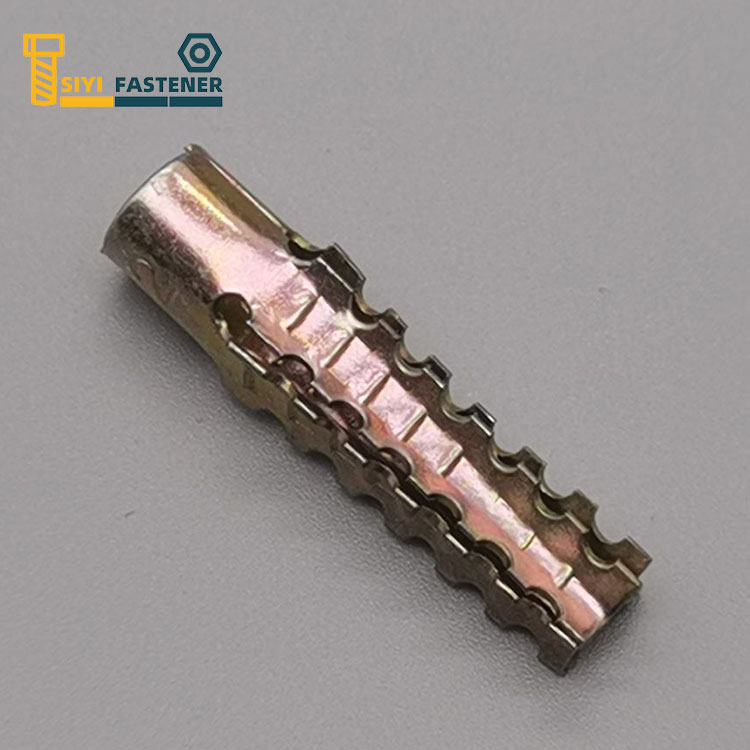As an efficient hollow wall fixing device, hollow wall anchors are widely used in civil and engineering fields. In home decoration, hollow wall anchors are often used to fix hollow structures such as gypsum boards and light steel keel partitions. For example, when installing bathroom towel racks, kitchen wall cabinets or hanging decorative picture frames, they fit tightly inside the wall through the principle of rotational expansion to avoid falling off due to uneven force.
In commercial buildings, this type of anchor can meet the installation requirements of office partitions, advertising light boxes and fire-fighting equipment. Its unique hollow structure adaptability significantly reduces the risk of traditional screws slipping, especially for lightweight building materials where steel bars cannot be pre-buried. The application of hollow wall anchors in the industrial field pays more attention to their bearing capacity and durability. For example, in the hoisting of ventilation ducts in factories and the fixing of equipment brackets, hollow wall anchors made of stainless steel can not only resist the potential loosening caused by vibration, but also adapt to the corrosion test in high temperature and high humidity environments.
Its design feature is that the friction between the outer wall of the anchor bolt and the hole forms a stable fulcrum, which can withstand greater vertical tension and shear force than ordinary expansion bolts. During construction, the corresponding specifications should be selected according to the wall thickness, and special installation tools should be used to ensure that the expansion sheet is fully unfolded, so as to maximize its mechanical properties. With the popularization of prefabricated buildings, the application of hollow wall anchors in the connection of prefabricated components has become increasingly critical. Construction workers often use hollow wall anchors with anti-rotation teeth to fix lightweight partition boards. This design can effectively prevent rotational displacement during construction and ensure the precise alignment of wall joints.
It is worth noting that the correct use of hollow wall anchors requires calculations based on the wall material and load requirements. Blindly increasing the specifications may cause wall damage, while too small specifications may pose safety hazards. Therefore, in actual projects, technicians need to strictly follow the mechanical parameters for selection, so that this seemingly simple connector can truly play the engineering value of "small load-bearing".
